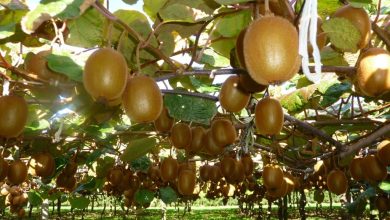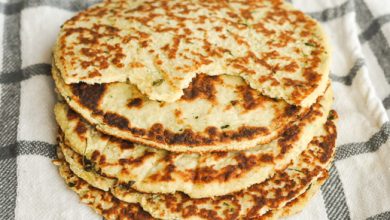6 Whole-grain Foods That Are Best For Your Health

Grains are a staple food in most households worldwide. Grains of all kinds are high in complex carbohydrates as well as vitamins and minerals. However, whole grains, the healthiest type of grain, are an important part of healthy nutrition.
Whole grains are simply grains that contain all three parts. They typically contain high levels of iron, magnesium, manganese, phosphorus, selenium, B vitamins, and dietary fiber. They mainly consist of three layers: bran (the nutritious outermost layer), germ (the seed’s nutrient-rich embryo), and endosperm (the germ’s food supply, which is high in carbohydrates).
Primary types of grains
Cereals, grains, and whole grains are the seeds of cultivated grasses. Grains and whole grains are available in a variety of shapes and sizes. So there are three basic types of whole grains.
-
Whole grains
These grains are either whole or ground into flour, with all parts of the seed remaining intact (bran, germ, and endosperm). Whole grains contain more fiber and other important nutrients than other types of grains. Only 15% of a wheat grain contains all of the fiber and most of the nutrients, as the endosperm makes up about 85% of the grain. B vitamins, iron, folate, selenium, potassium, and magnesium are among them.
-
Refined grains
Refined grains go to the mill to remove the germ and bran, giving them a finer texture and extending their shelf life. During the refining process, they also lose many nutrients, including fiber. White flour, white rice, and white bread are examples of refined grains.
-
Enriched grains
Enriched foods replace some of the nutrients lost during processing. During milling, some enriched grains lose that have B vitamins. Fortification refers to the addition of nutrients that do not occur naturally in food. Whole grains can be fortified or not.
6 whole-grain foods for your health
The Dietary Guidelines for Americans recommend that you consume at least half of your grains as whole grains. Most people do not consume enough whole grains. So, incorporating whole grains into your healthy diet is essential.
Grains are the healthiest because they are high in fiber and provide numerous benefits to people’s lives. It makes maintaining a healthy body weight easier. Whole grains also give a lower risk of cardiovascular disease, diabetes, certain cancers, and other health issues. The following are some of the most important whole-grain foods to consider in our daily lives:
-
Whole oats
Oats are one of the most nutritious whole grains on the market. Oatmeal (Avena sativa) is one of the few grains that are almost always sold whole. Steel-cut oats contain the entire grain kernel, cracked for faster cooking, while old-fashioned or rolled oats are steamed and flat.
They are the best whole grain for lowering blood cholesterol and are high in protein, calcium, iron, vitamin B1, and niacin. Scotch eggs, granola, and, of course, oatmeal are all great ways to incorporate oats into your diet.
-
Whole wheat
Whole wheat is a popular and extremely adaptable cereal grain. It’s a key component in baked goods, pasta, noodles, couscous, bulgur, and semolina. Wheat is widely consumed, but it is also highly controversial due to its gluten content. Gluten is a protein that, in some people, can cause a negative immune response.
Because different grains offer different nutrients, certain whole grains provide more dietary fiber than whole wheat alone. Whole wheat contains gluten, so if you’re gluten-sensitive, look for gluten-free whole wheat varieties. Wheat is widely consumed, but it is also critical due to its gluten content. Gluten is a protein that, in some people, can cause an adverse immune response.
The entire grain is present in whole wheat, including the fibrous husk, bran, and endosperm. Regular wheat, on the other hand, is stripped of the nutrient-dense husk and bran.
-
Quinoa
Quinoa is an ancient grain that belongs to the amaranth family (not a true cereal). This ancient grain contains more vitamins, minerals, protein, healthy fats, and fiber than common grains. Whole wheat, oats, and a variety of other grains are examples.
Quinoa is also high in antioxidants like quercetin and kaempferol, which can neutralize potentially harmful molecules known as free radicals. Chronic diseases such as chronic inflammation, heart disease, and cancer have all been linked to these molecules.
Quinoa is one of the few plants that contains all nine essential amino acids, making it one of the few complete proteins. As a result, it is an excellent choice for vegetarians and vegans.
-
Whole-grain bread
Whole-grain bread products are a simple way to incorporate more whole grains into your diet. They are widely available and come in a variety of flavors and textures, including rye bread, whole-wheat bread rolls, whole-grain bagels, whole-grain tortillas, and others.
White whole-wheat bread has the same nutritional profile as regular whole-wheat bread. If you prefer the texture and taste of white bread but want the nutritional benefits of whole wheat, this is the bread for you. White whole-wheat bread is preferable to refined-white bread.
This bread contains sprouted grains and legumes, which have been soaked in water to allow them to germinate. This increases their nutrient content while decreasing antinutrients commonly found in whole grains.
-
Brown rice
That’s because it’s a whole grain, which means it contains the entire grain, including the bran, germ, and endosperm. White rice, on the other hand, is free of both bran and germ. It is a great healthier alternative to white rice.
The bran coating imparts a nuttier flavor and chewy texture to brown rice. Brown rice contains three times as much fiber as white rice and is higher in protein, potassium, B vitamins, magnesium, zinc, iron, selenium, and manganese. All of these nutrients are essential for bone growth and energy.
Cooked brown rice contains 1.8 grams of fiber per 3.5 ounces (100 grams), whereas white rice contains only 0.6 grams of fiber per 3.5 ounces. Brown rice is naturally gluten-free, making it an excellent carbohydrate choice for a gluten-free diet.
Conclusion
In conclusion, the main motive of this post is to provide 6 whole-grain food nutrients that are essential for human health. There are many grains available in nature, but the importance of whole wheat grains is vital. It is a carbohydrate with a high quantity of nutrients like fiber, vitamins, minerals, protein, and others. Many wheat bran wholesale suppliers provide their services to those areas where whole-grain foods are highly consumable. Eating a variety of whole grains ensures you get more health-promoting nutrients while also adding variety to your meals and snacks.
Read more: The Best 10 Foods to Eat if You’re Trying to Lose Weight





